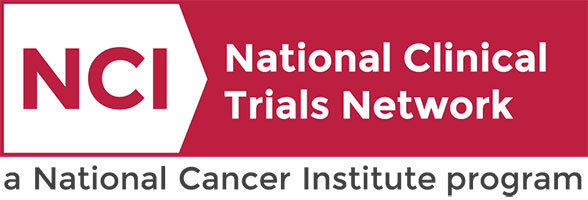Gianni Castiglione, Ph.D.
- Assistant Professor of Biological Sciences
Gianni Castiglione, Ph.D.
- Assistant Professor of Biological Sciences
gianni.castiglione@Vanderbilt.Edu
Research Program
Research Description
Avi Baskin, M.D.
- Urologic Oncology Fellow
Avi Baskin, M.D.
- Urologic Oncology Fellow
avi.s.baskin@vumc.org
Research Program
Ivelin Georgiev, Ph.D.
- Professor of Pathology, Microbiology and Immunology
Ivelin Georgiev, Ph.D.
- Professor of Pathology, Microbiology and Immunology
ivelin.georgiev@vumc.org
Research Program
Fatma Sezen Meydan Marks, Ph.D.
- Assistant Professor of Biochemistry
Fatma Sezen Meydan Marks, Ph.D.
- Assistant Professor of Biochemistry
sezen.meydan@vanderbilt.edu
Research Program
VoLo Foundation grant supports Southern Environmental Health Study
A grant from VoLo Foundation will augment federal funding for the Southern Environmental Health Study, an initiative to determine whether environmental exposures are contributing to cancer cases in the region.
The study received its initial funding from the National Cancer Institute and the Vanderbilt-Ingram Cancer Center. A grant from VoLo Foundation — a private nonprofit organization dedicated to accelerating global impact through science-based solutions, education enhancement, and health improvement initiatives — will allow investigators to recruit additional participants and conduct methylation- and proteomics-based biological aging assays to check for biomarkers of early disease risk.
On cancer incidence and mortality maps, some of the highest rates in the country appear in the southern U.S., but whether environmental exposures are a contributing factor has not been scientifically determined. The study is a long-term cohort investigation that will follow participants for at least 10 to 20 years. The participants are between the ages of 40 and 70 and live in Alabama, Arkansas, Delaware, Florida, Georgia, Kentucky, Louisiana, Maryland, Mississippi, Missouri, North Carolina, Oklahoma, South Carolina, Texas, Tennessee, Virginia, West Virginia or the District of Columbia.
“Humans are exposed to large numbers of chemicals and their mixtures with more than 80,000 chemicals having been registered by the Environmental Protection Agency,” said Wei Zheng, MD, PhD, MPH, the Anne Potter Wilson Professor of Medicine and the director of the Vanderbilt Epidemiology Center. “However, very few of them have been adequately investigated in relation to human cancers and other diseases in epidemiologic studies. There are considerable challenges in studying environmental exposures in epidemiologic studies.”
Participants will wear silicone wristbands designed to collect chemicals, which researchers will use to measure exposure to approximately 500 compounds. They will also analyze blood samples to assess the internal exposome using both liquid chromatography and gas chromatography with high-resolution mass spectrometry, allowing them to detect approximately 1,500 confirmed chemicals and endogenous metabolites. To identify potential environmental carcinogens, the researchers will use an innovative exposome-wide association study to link chemical exposures with disease biomarkers, including indicators of biological aging and inflammation.
“Supporting the Southern Environmental Health Study aligns with our mission to advance data-driven solutions that can lead to healthier, more resilient communities. This research has the potential to uncover possible links between environmental exposures and chronic diseases,” said David Vogel, co-founder and chief scientist of VoLo Foundation.
Vogel and his wife, Thais Lopez Vogel, formed the VoLo Foundation in 2014.
“We are very grateful for the support of the VoLo Foundation and believe that this study will generate significant amounts of novel data regarding potential impacts of environmental exposures on human health and pave the way for future studies in this important area,” Zheng said.
The post VoLo Foundation grant supports Southern Environmental Health Study appeared first on VUMC News.
All cancer patients at Vanderbilt-Ingram will have the opportunity to ring the bell
From his infusion chair, Matt Duckworth would clap and yell “woohoo” each time he heard another cancer patient ring the bell to mark the completion of chemotherapy treatment, even though he knew he would never get that opportunity.

On Friday, April 25 — seven months after his death — the bell pealed loudly at the Vanderbilt-Ingram Cancer Center infusion clinic as a plaque was unveiled in his honor and the announcement was made that patients receiving palliative chemotherapy would also get to ring the bell going forward.
Duckworth was in the prime of his life at age 41, working as director of Population Health Operations for Vanderbilt Health Affiliated Network and doting on his three dogs with his wife, Suzanne, when he was diagnosed in 2020 with Stage 4 gastroesophageal cancer that had metastasized to his liver. Although the chemotherapy didn’t cure his cancer, the treatments did extend his life for four years.
“Matt had infusions weekly, and as we were sitting in the infusion room for hours at a time, we would hear the bell ring, and we would hear everybody clapping,” said Suzanne Duckworth. “He would clap and yell, ‘Woohoo!’ He just emitted such a positive vibe and aura. I would sit there and think, ‘He’s never going to get that because he has terminal cancer.’ Now, that thought might have come into his brain, but you would never know it because he never said it.”

She asked Vanderbilt-Ingram about adding a plaque, and a ceremony was held in Matt’s memory to mark the occasion. Colleagues, family and friends shared stories about the man, who was beloved for his sense of humor, love for trips to Disney World and his affinity for dogs. His physician, Michael Gibson, MD, PhD, associate professor of Medicine, spoke about the relationship he developed with Matt and how much he enjoyed spending time with him.
Suzanne Duckworth stated, “This is for you, Matt,” and rang the bell.
His mother, Betsye, stood nearby wiping away a tear. On the plaque that had just been unveiled was a poem written by his sister, Jill Comfort.
I stand before the bell today
Not for an end, but to proudly say
I fought with every breath I had
Through days of pain and times of glad
I ring this bell for all I’ve done
For every battle, fought and won
For every day, for every try
I ring the bell — head held high
Ten years younger than Matt, Comfort had come to Nashville from Mississippi, to help Suzanne, who is a Vanderbilt nurse, with her big brother when he began hospice care. It had also bothered her that Matt never got to ring that bell, so she bought him one and read him the poem she had written.
“But he wouldn’t ring the bell because that was admitting defeat,” Suzanne Duckworth said.
A native of Clinton, Mississippi, Matt excelled in life, attaining an undergraduate degree in journalism, a Master of Science in public relations and then a Juris Doctor from Mississippi College of Law with honors followed by a Doctor of Healthcare Administration.
He and Suzanne married in 2003 and eventually moved to Nashville, where they both established careers at Vanderbilt University Medical Center.
“When things were running down, he didn’t want to give up,” Comfort said. “Then one day, he asked me if I would read the poem at his funeral and ring the bell. That somehow transpired into where we are today. We talked about how there were other people in his situation that don’t get that opportunity who are needing treatments for years and years. They need some encouragement.”
Suzanne Duckworth approached Julie Bulger, manager of Patient- and Family-Centered Care at Vanderbilt-Ingram about allowing any chemotherapy patient to ring the bell regardless of whether they had completed treatment or achieved remission.
“When Suzanne shared her idea about a new plaque, I deeply appreciated what she said, how when Matt heard the bell, he felt happy for those who rang it,” Bulger said. “It is rung traditionally at the end of treatment, but many patients may never have that opportunity. This thought comes from a lot of places, not only from Matt, but Suzanne articulated it so beautifully. I believe this is going to resonate with many people.
“The bell can be rung at any time. It doesn’t have to be the last day of treatment. It can be rung because you’re having a bad day, and you’re fighting, and it’s hard. Or you have achieved a different milestone. You want to ring that bell because it’s going to mean something for you, and you want to feel uplifted,” Bulger said.
The post All cancer patients at Vanderbilt-Ingram will have the opportunity to ring the bell appeared first on VUMC News.
Vanderbilt-Ingram 26th Annual Scientific Symposium focuses on AI
Experts on the research, clinical use, governance and ethical use of artificial intelligence gathered for the recent Vanderbilt-Ingram Cancer Center 26th Annual Scientific Symposium.
In a twist from years past, graduate students and postdoctoral fellows took the helm in selecting the topics and inviting speakers focused on “Artificial Intelligence in Cancer Research and Clinical Care.”
The keynote speakers were Eytan Ruppin, MD, PhD, chief of the Cancer Data Science Laboratory at the National Cancer Institute, and Gelareh Zadeh, MD, PhD, chair of the Department of Neurologic Surgery at Mayo Clinic.
Ruppin detailed how he is developing computational approaches for advancing precision oncology, and Zadeh explained how she is using integrated multi-platform molecular analysis of brain tumors to predict patients’ responses to targeted therapies. Ruppin participated in panel discussions about artificial intelligence.
“I am enriched talking to you guys,” Ruppin said. “I develop AI materials, but I am not using them to treat patients. I am learning a lot.”
Douglas Flora, MD, executive medical director of Oncology Services at the Yung Family Cancer Center at St. Elizabeth in Edgewood, Kentucky, and the editor-in-chief of AI in Precision Oncology, replied, “All of us are cross pollinating. That’s why I love a symposium like this.”
In opening the first panel discussion that focused on ethics, Ellen Wright Clayton, MD, JD, the Craig-Weaver Professor of Pediatrics, professor of Law and professor of Health Policy at Vanderbilt, framed artificial intelligence from an historical perspective, noting that “decision support is not new to medicine.” She gave specific examples of how clinicians can use artificial intelligence for decision support but stressed that they should not rely solely on it for treatment plans.
“It is not OK simply to get the AI output and just do what it says,” Clayton said. “Maybe it is OK, but it is always required to see if that’s the right advice. Always.”
In another twist from years past, the Mission Moment, which is a personal testament from a patient, was presented by a pediatric cancer survivor for the first time. Easton Reeder, 13, who has undergone surgery and chemotherapy for pilocytic astrocytoma — a type of brain tumor — shared about his experiences living with cancer. He told his story vividly with flashes of humor, describing how being tossed in the air like a rodeo clown by a Great Dane led to his diagnosis.
Clinicians initially concluded that he had a concussion because of persistent headaches that followed, but his mother, who is a nurse, insisted on a brain scan. Reeder, a committed athlete, who continued playing sports even while undergoing chemotherapy, was given a jersey signed by Vanderbilt baseball players.
“I learned that tomorrow isn’t a promise, and I have to make the best of every moment I have,” Reeder said. “I also learned that there is no ‘normal button.’ I have been trying to learn that power since forever, until I realized that power is not to be . . . God has proven to me that anything is possible through him.”
In his welcoming remarks, Vanderbilt-Ingram director Ben Ho Park, MD, PhD, emphasized the importance of training new generations of cancer researchers and clinicians.
“This is an opportunity for us to celebrate all the cancer research going on at Vanderbilt-Ingram,” Park said. “For all of you who don’t know, we really run the spectrum of everything research: clinical, population science, laboratory science and everything in between. This is our time of the year when we get to showcase and highlight not only the great science that our external panelists and presenters are going to bring — but you will be duly impressed, as I always am, by what our trainees bring to the table. The future really is bright, and we have to keep sustaining our future by encouraging and mentoring the next generation, which will ultimately lead to more cures.”

Two tied in voting for the Graduate Student of the Year. Candace Grisham, MS, received the honor for her research into brain tumors, including a study she authored that was published in Clinical Neurology and Neurosurgery. Xiaopeng Sun, PhD, is the other co-awardee for his research into biomarkers to predict immunotherapy outcomes in patients, and his prolific contributions to that field of study, including 12 studies published in scientific journals.
Guochong “Damon” Jia, PhD, MPH, is the Postdoctoral Scholar of the Year. He was selected for his high-impact research that has advanced the understanding of cancer genetics and epidemiology, including the largest genetic study ever conducted on breast cancer in African ancestry populations, which was published in Nature Genetics.
The poster exhibition was one of the largest ever for the annual event. Sarah Reed took home the overall winner award for her entry “Identifying Genotype-Specific Effects of CHIP on Solid Tumors Using Chimeric Mouse Modeling and Clinical Data.”
In the Translational Science Category, Julia Steele won first place; Alexander Kwiatkowski, PhD, won second place; Heather Beasley, PhD, won third place; and honorable mention went to Jacey Marshall.
Robust participation in the Basic Science Category resulted in duplicate prizes due to the number of entries. Rachel Sinard and Lincoln Brown won first place prizes. Emily Green and Logan Vlach received second place awards, andAnna Gilbert and Alyssa Jarabek received third place awards. Honorable mentions went to Sydney Bates, Nicholas Eleuteri, Sarah Glass, PhD, Gabriela Gonzalez Vasquez, Maxwell Hamilton, Yash Pershad, Jared Rhodes and Brenda Rios.
In the Population Science Category, Michael Betti received first place; Duc Huy Le, MD, MBA, received second place; and there was a tie for third place with Melissa Goldin and Jiajun Shi, PhD, both receiving awards. Honorable mention went to Grace Xu.
The post Vanderbilt-Ingram 26th Annual Scientific Symposium focuses on AI appeared first on VUMC News.
Three Vanderbilt-affiliated cellular therapy programs receive reaccreditation
The cellular therapy programs at Vanderbilt-Ingram Cancer Center, Monroe Carell Jr. Children’s Hospital at Vanderbilt, and the VA Tennessee Valley Healthcare System have received reaccreditation from the Foundation for the Accreditation of Cellular Therapy (FACT).
Founded in 1995, FACT establishes standards for high quality medical and laboratory practice in cellular therapies. FACT is a nonprofit corporation co-founded by the International Society for Cell and Gene Therapy and the American Society for Transplantation and Cellular Therapy for the purposes of voluntary inspection and accreditation in the field of cellular therapy.
“FACT is an internationally recognized accrediting body for hospitals that offer stem cell transplant and cellular therapy, and recognition by FACT indicates that the accredited institution has met the most rigorous standard in every aspect of cellular therapy,” said Adetola Kassim, MD, professor of Medicine and director of the Vanderbilt Stem Cell Transplant and Cellular Therapy Program. “This covers the entire spectrum of stem cell therapy from clinical care to donor management, cell collection, processing, storage, transplant, administration and cell release.”
The Vanderbilt and VA Tennessee Valley Healthcare System programs received accreditation notification on April 14 after on-site inspections in October 2024. The accreditation is effective for three years.
“Congratulations to the entire Vanderbilt University Medical Center and VA Tennessee Valley Healthcare System team on achieving FACT accreditation and providing quality care for the people we serve,” Kassim said.
The post Three Vanderbilt-affiliated cellular therapy programs receive reaccreditation appeared first on VUMC News.


